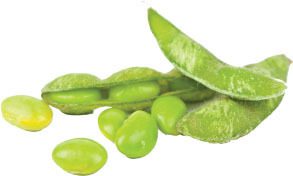Understanding the trajectory of the coatings industry is essential for business leaders and strategic marketers, but it’s equally important to assess whether innovations and product launches align with the megatrends shaping the market. Aligning a company’s innovation portfolio and strategic initiatives with these megatrends ensures long-term relevance and impact, avoiding the pitfalls of short-lived gains.
Numerous lists of megatrends are available; though the wording may vary, they typically converge on similar themes. Drawing from our extensive experience collaborating with companies across the global coatings industry value chain, ChemQuest has identified the following key influences:
- Environmental sustainability
- Health awareness
- Mobility
- Digitalization
- Demographic shifts
- Urbanization
- Globalization and “glocalization”
- Social instability and inequality
The megatrends with the most bearing on the North American market include environmental sustainability, health awareness, mobility, and digitalization. While the others also shape the industry, their impact is more pronounced outside North America and will be discussed in the July-August 2025 issue of CoatingsTech.
Environmental Sustainability

Environmental sustainability involves designing, producing, using, and disposing of materials to minimize environmental harm while preserving resources for future generations. This megatrend has historically shaped the coatings industry and will remain a key driver for years to come. The term “circular economy” has become a mainstay for coating and raw material suppliers, and two key parts of companies’ circular economy initiatives are the use of bio-based materials and recyclability.
Bio-based Materials

Demand for bio-based raw materials is growing as consumers favor products from renewable resources over petroleum-based alternatives. Beyond reducing reliance on finite fossil reserves, bio-based coatings often offer a lower carbon footprint and greater biodegradability than petrochemical options.
This consumer appeal drives companies to prioritize bio-based efforts in coatings marketed toward consumers. One example of this is AkzoNobel’s Rubbol WF 3350, launched in February 2025, which is a waterborne wood coating with 20% biobased content. AkzoNobel describes the product as a sprayable opaque coating that is suitable for interior and exterior use. The company claims it matches the high performance standards of equivalent coatings, even in the harshest weather conditions.
Another example is Liquitex’s Bio-Based Heavy Acrylics, marketed to artists as “the world’s first bio-based pro-grade fine art paint.” This North American brand has replaced 50% of its acrylic resin with bio-based materials and substitutes other ingredients with renewable alternatives where available, pledging further adoption as options emerge.
Bio-based coatings draw from a variety of sources, such as corn, soy, sugarcane, algae, and other once-living organisms. A common strategy is to replace part of the binder (or its precursors) with bio-based materials, enabling significant renewable content. Soybean oil, a longstanding raw material in alkyd binders, exemplifies this approach.
Acrylic manufacturers are also advancing, with BASF’s 2-Octyl Acrylate (2023), made from castor oil with 73% bio-based content, and Arkema’s ethyl acrylate (2023), produced solely from bioethanol with 40% bio-carbon content. These monomers enable the development of polymers for various coatings applications, from decorative paints to industrial finishes.
Molecular Recycling
Often referred to as “advanced” or “chemical” recycling, molecular recycling is another topic that is gaining traction in the coatings industry. This term refers to processes that break down complex materials such as polymers into their fundamental building blocks using chemical reactions. This process yields raw materials that rival virgin feedstocks in purity and performance, unlike mechanical recycling, which often degrades quality.
Given the mass-balance approach typically used to track recycled content, here we’ll focus on companies pioneering molecular recycling and the coating materials leveraging their outputs. Two North American leaders in this space are Eastman Chemical Co. and Trinseo.
Eastman’s Polyester Renewal Technology (PRT), recently scaled to initial production, employs methanolysis to convert polyester waste into basic monomers. These recycled monomers feed into new polyesters for applications like coatings, with Eastman reporting a 20-30% reduction in greenhouse gas emissions compared to fossilbased processes.
Similarly, Trinseo’s polymethyl methacrylate (PMMA) depolymerization facility in Rho, Italy, opened in June 2024, uses advanced chemical recycling to transform PMMA waste into high-purity recycled methyl methacrylate (rMMA). Headquartered in Wayne, Pa., Trinseo maintains that its rMMA matches virgin material performance with a significantly lower carbon footprint. This rMMA can be used to develop acrylic resins and latex binders for a variety of applications, including paints and coatings.
Continue reading in the May-June digital issue of CoatingsTech
